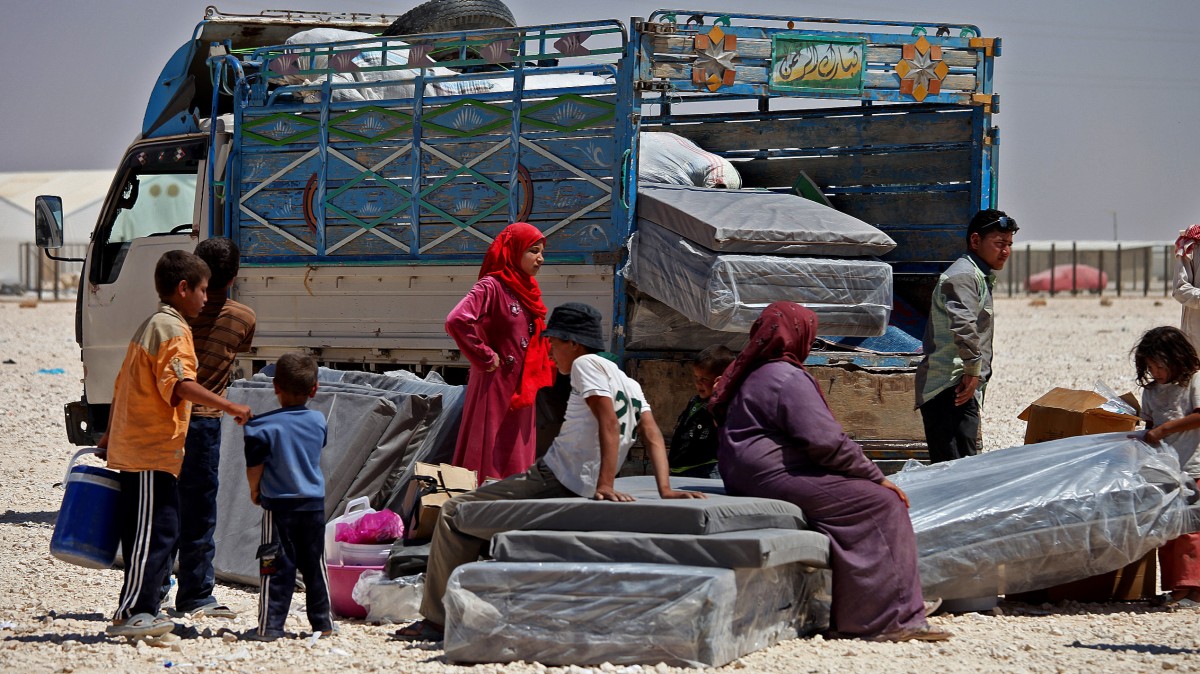Israel Receives $3.1B In US Aid While The Middle East’s Poor Struggle To Survive
Israeli’s earn an average per capita income of $34,990 -- more than three-and-a-half times what its neighbors in Lebanon earn and almost 19 times more than Syrians take home each year -- yet the country continues to receive billions in U.S. aid.

A Palestinian boy protests outside a wealthy Israeli settlement. (Photo: Garry Walsh/flickr)
JERUSALEM — Every year, Israel receives billions of dollars in U.S. aid, despite the fact that its citizens enjoy a standard of living well above that of neighboring countries. And while the Middle East struggles through a historic refugee crisis, Israel is using U.S. taxpayer money to fuel its war crimes against Palestine and oppression of refugees.
The average income of Israel’s citizens is $34,990, based on 2014 data provided by the World Bank. For neighboring countries, that figure is far lower: Residents of Lebanon earn an average of $9,800 annually, followed by other Israeli neighbors including Jordan ($5,160), Egypt ($3,050), and Syria, where the average resident survived on just $1,860 in 2014, according to the World Bank’s data. For occupied Palestine, the World Bank offers a data sheet on the West Bank and Gaza, which estimates that the average resident makes $3,060 annually.
Against this backdrop of relative financial comfort for its residents, Israel received over $3.1 billion in foreign aid from the United States in 2015, the same amount received in 2014. The money goes directly to its military budget, where it fuels Israel’s war crimes against the Palestinian population, as well as its defense of its illegal occupation of the Golan Heights.
That averages out to about $8.5 million dollars per day.
And that figure doesn’t include additional U.S. aid for other projects, such as the $10 million that goes toward Israel’s control of refugees, including building a new wall to keep Syrian refugees out and maintaining a massive complex of immigrant prisons and detention centers. Millions more are provided for missile defense, including the Iron Dome system. In March 2014, Congress even authorized another $3 million for joint research between Israel and the Department of Homeland Security.

Syrian refugees take down their belongings at Zaatari refugee camp, in Mafraq, Jordan. (AP/Mohammad Hannon)
Against this backdrop of fiscal largesse, the Middle East is struggling with rampant poverty exacerbated by years of Western intervention and warfare, and a refugee crisis of staggering proportions, created in large part by a Syrian civil war that Israel and its Western allies have both promoted and profited from.
In May, the United Nations estimated that it would cost $4.5 billion dollars in aid to support the millions of refugees flooding out of Syria and other Middle Eastern countries, as well as the 6.5 million who are internally displaced. At the time, the U.N. estimated only $900 million had been provided globally. Only a last-minute donation of $65 million by the U.S. in August kept a crucial food aid program alive.
However unlikely its implementation, one solution to the global unrest and record-breaking displacements and migration faced by the world today would be for the U.S. to begin transition to a “peace economy,” as Sean Nevins reported for MintPress News last year. Rather than building its economy through unsustainable, endless warfare and intervention, the U.S. could begin diversifying those billions into other industries and sustainable forms of aid to help the needy and displaced created by its imperialist policies.
No comments:
Post a Comment